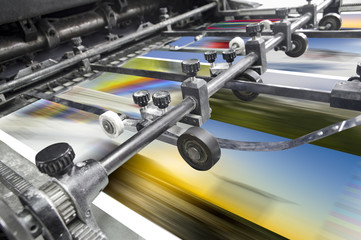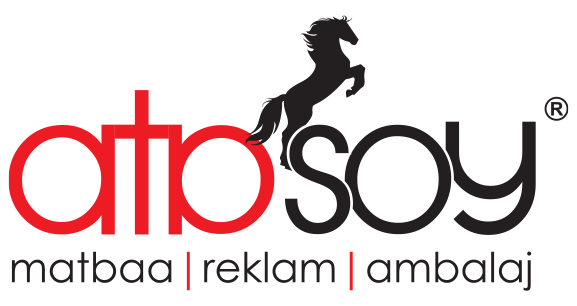The layer suitable for printing on the raw material consisting of fine plant fibers is called paper.
The properties of the papers change according to the printing systems. The basic condition required for printing to occur is that the ink used can adhere to the paper surface. For this, the paper must not wear out during printing and its fibers must be more durable than the dye core. The strength of a paper is even more important in multi-colour printing. If the printing machine is single or multi-unit, the paper can pass through the machine 4 or 8 times in the number of colors of the print. In these transitions, the paper should not lose its feature. As a result: Although the reproduction is done in accordance with the original, excessively absorbent paper reduces the print quality.
Quality paper contains around 5% wood. This ratio is necessary for the strength and stiffness of the paper. Otherwise, it may not be able to withstand the pressure and be damaged.
The whiter the paper, the more pronounced, contrast and brighter the printed images will be. Papers with more cellulose are more suitable for multi-color printing than papers with less cellulose. There are two reasons for this. The fact that the papers with more cellulose are whiter, and these papers are not affected by sunlight and turn yellow.
The quality of the paper is closely related to the additives in it. Every printing system requires the ability to absorb a certain amount of ink from the paper. Paper gains this quality with the amount of glue in it and whether its surface is matte or glossy. Glue papers give more adjusted printing. Papers without glue quickly become damp and rotten. However, there must be a limit to how the paper absorbs the paint. When printing on excessively absorbent papers, it is seen that the ink is transferred to the back side. When more than one dye is applied, it is seen that this time there is a change in color tone and instability. If the amount of ink cannot be increased due to printing, color saturation cannot be achieved in the pictures in the printed work.

Paper Standards
Since the papers used in rotation printing are sold in coils, they are ordered with the width of the coil. (For example, 70 grams of 1st Dough, 45 rolls). In sheet-printing machines, the paper is cut in layers and sold in rolls or packs. Apart from these, there are papers of all sizes by special order, and if necessary, special cuts are made from the paper in the form of coils, and the desired size of paper is obtained.What You Need to Know About Paper
In the printing sector, paper is classified according to the first pulp - the second pulp - the third pulp, that is, according to the way of production.
1. Pulp paper: It has a lot of cellulose and less wood in its composition.
2. Pulp paper: The wood and cellulose ratio in its composition is almost equal.
3. Pulp paper: It has a lot of wood and less cellulose in its composition.
Coated paper: High quality paper with 5% wood in its composition, glossy and matte type.
Plush: Very thin and light paper.
Wrapping paper: Paper made from low-quality pulp, in which thick and heavy items are wrapped.
American Bristol: It is a type of thick paper with a glossy coating on one side.
Autocopy papers: It is the type of paper that has the same writing on the lower copies when it is written on the upper copy.
Special Papers
Aydınger: A slippery surface, translucent special paper mostly used by architects. Blueprint paper: Paper that is used to reproduce pictures and writings from patterns, the surface of which is covered with a light sensitive material.Quality of Offset Paper
Paper is essential to print very well and achieve a very fast print speed. The required properties of the papers to be used in offset printing are as follows:
- The surface should be smooth, the cut should be smooth,
- The paper must be cut straight in the direction of the water,
- Must be able to print. (in terms of fiber and fillers),
- Humidity should be normal 60-65%,
- It should be well stored,
- It should not be too dusty.

According to the Printing Systems of Papers Properties
Quality of Offset Paper
It is not essential for the print quality that the papers used in this printing technique have a smooth and smooth surface. Printing is also done on embossed and patterned papers. Blanket, which gives the dye to the paper in offset, can easily transfer the dye to the rough and porous parts of the paper. Thus, it is possible to print fine screens. However: In offset, plain, smooth and equal thickness papers are printed more easily.
Letterpress Papers and Features
In this printing system, the properties and elasticity of the paper surface are important because the printed parts are high and hard. Paper selection should be made according to the job to be printed. Matt paper is preferred for multi-colored works in letterpress printing. Since the surfaces of good coated papers are smooth, the thickness is the same, and both sides are satinated properly, brightness is also important in letterpress. Instead of coated, 1st grade paper can be used for less important works, and even 3rd grade paper can be used for monochrome work.
Intaglio Papers And Properties
Gravure papers should be of equal thickness, soft and elastic. Only in this way is it compatible with the cylindrical intaglio mold. Since the dye used in this type of printing is fluid, the absorbency of the paper during drying is very important. Since the paper must be absorbent, it must have little glue. As in rotational printing, coil winding is also very important. If the properties of the paper are as we want, opacity and gloss are not so important.
Rotary Offset (Web Offset) Printing Papers And Properties
Very high circulation works and newspapers are printed with rotary offset printing machines. The papers to be used in these machines must be particularly strong, elastic, and the bobbins must be wrapped with equal tension. Rotary printing prints 3-4 times faster than flat offset printing, that is, the system that prints on sheet paper. The paper must withstand this speed and should not break (tear). At the same time, perfect wrapping of the paper on the bobbin is very important in terms of machine adjustment. In bobbin printing (rotation), since the adjustment is provided only from the side poses, if the bobbin paper is sometimes hard and sometimes loose, there will be misalignment. Recently, very sensitive electronic devices have been used for these.
Screen Printing Papers And Features
With this technique, it is possible to print on almost any type of paper. Well-glued papers give much better results.
The Damage of Excess "Ph" in Paper in Printing
Paper with acidic or basic Ph value causes the printing plate to deteriorate. Since the offset ink-water balance is a water-operated system, the humidity on the rubber is always in contact with the paper surface. As it is known, since water is a kind of solvent, the acidic or basic effect on the paper transfers from the rubber to the plate, causing the printing plate to lubricate and thus the PLATE TO FLY. At the same time, this effect increases or decreases the pH value of the chamber water by passing to the quenching rollers that moisten the plate and thus to the printing plate chamber water.
Paper Backing (Contamination)
The ink absorption of paper is usually related to its surface. The thickness of the ink on the paper surface is very important. The ability of the paper to absorb ink is very important. Often the ink dries on the paper surface as a result of oxidation. If the surface has a low absorbency, the ink will settle on the paper very slowly and backing occurs. Backing ; If the ink on the printed surface does not dry, the second layer on it contaminates the surface of the paper. This term is confused with the fact that a work printed in bold on the front of the paper is visible from the back of the paper.
Water Path of Paper
Water path of the paper means the direction (texture direction) in which the pulp flows from the hopper to the sieve continuously during manufacture. Because cellulose fibers stretch in this direction and become felted. The most practical process to find the water direction of the paper is as follows: A piece of paper is folded horizontally and longitudinally. The folded places are slightly moistened and scratched with a nail. After this process, the waving side of the paper shows that the water direction is opposite. Because the cellulose fibers are broken in this direction and cause fluctuations in the paper. The other side that does not fluctuate shows the side where the water direction of the paper is. The waterway of the paper is extremely important in printing and binding.
Detection of Paper Waterway
- Paper tears more smoothly in the direction of the water.
- In the opposite direction, it is more hairy and curved.
- Paper is tougher in the direction of water.
- When the paper absorbs or releases moisture, it stretches against the direction of the water.
Paper Quality Control
- The surface of the paper is checked by visual inspection under light from the side and by touching it with the hand.
- In order to understand the cleanliness of the paper, it should be examined with a loop by lighting it from the top and bottom.
- The strength of the paper can be understood by folding it many times and tearing it horizontally.
- The thickness of the paper is measured with a micrometer.
- The whiteness of the paper can be measured using measuring instruments.
It is possible to understand whether the amount of glue in the paper is more or less by drawing longitudinal lines with an ink pen on the paper. If the ink does not spread on the paper and does not pass to the back, we can say that the paper is fully glued. Thin lines do not spread and go to the back, but if thick lines do spread and go to the back, this paper is half glued. If both lines pass to the back, we can interpret it as having little or no glue.
- We can tell if a paper is airtight by lighting a candle underneath. Airtight paper produces many air bubbles when candles are lit underneath.
- It can be understood that the paper transmits light when you put something printed underneath and look at it.
- It is very important whether the paper is dusty or not. Since it will damage the rollers of the machine during printing, it is checked whether it is dusty by wiping with a black cloth or by wiping the paper to be tested on a black paper.
- To understand the absorbency of the paper, one surface is wetted. Absorbent paper absorbs water quickly.
- In order to understand whether the paper will break during printing, it is pressed on the surface with a wet finger and pulled quickly.
